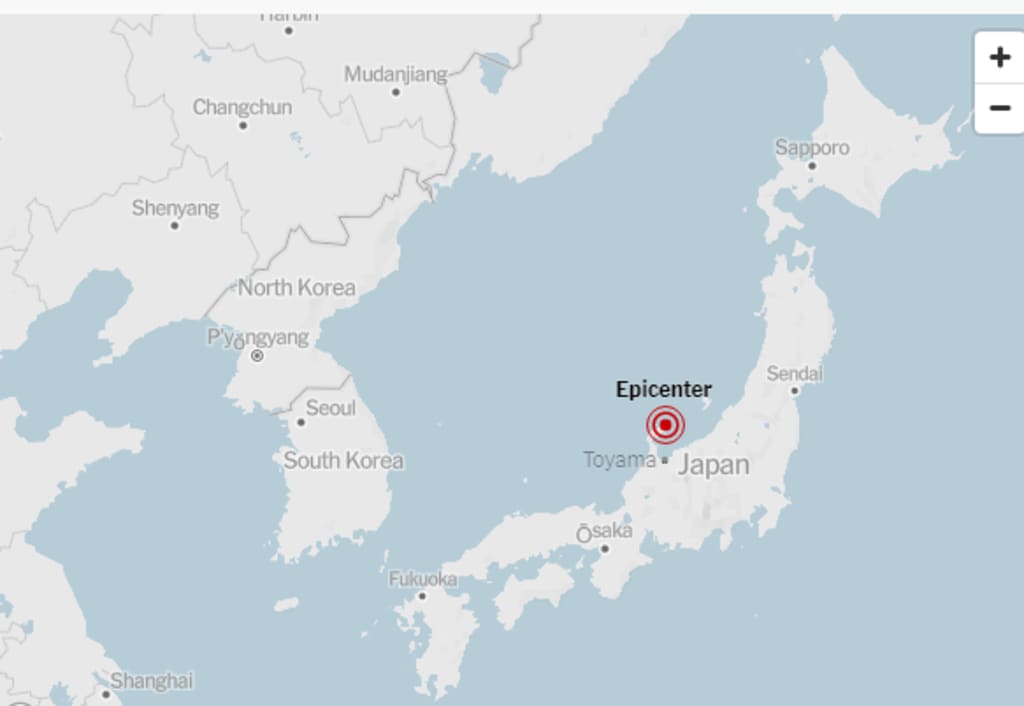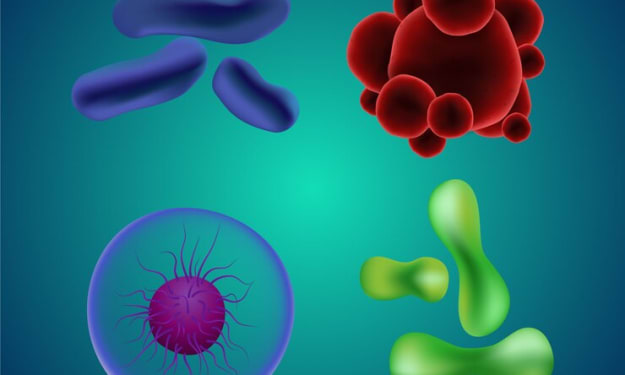
A strong earthquake struck western Japan on Monday, causing several prefectures to issue evacuation orders and tsunami warnings, trapping people beneath collapsing buildings and cutting off electricity to tens of thousands of people in Ishikawa Prefecture, the epicenter of the quake, according to authorities and Japan's public broadcaster.
According to the Japan Meteorological Agency, the earthquake had a magnitude of 7.6 on the Japanese seismic intensity scale when it struck the Noto peninsula at 4:10 p.m. The United States Geological Survey reported that the magnitude of the earthquake was 7.5.

It was far less than the 8.9-magnitude earthquake that killed thousands of people in Japan in 2011 and led to a nuclear meltdown at the Fukushima power plant.
The Japanese government was still compiling data on injuries. According to the NHK public television, patients had arrived at two hospitals: one in Wajima City, where injured people were being treated in the hospital parking lot, and one in Suzu City, which was running on generator power due to an outage of electricity.
Calls from locals reporting collapsing buildings and individuals trapped beneath them prompted the police to respond. Yoshimasa Hayashi, the chief cabinet secretary of Japan, reported that at least six cases of persons buried under debris had been reported in Ishikawa. However, he was unable to provide information regarding the number of casualties or the specifics of their injuries.
What more to be aware of is this:
The shallow depth of Monday's earthquake, according to the Japan Meteorological Agency, makes earthquakes more deadly. However, preliminary indications from the Ishikawa Prefecture officials indicated that no significant damage had been done to "important facilities."
The meteorological agency first issued a major tsunami warning for portions of the western coast, stating that waves in the Noto Peninsula facing the Japan Sea might reach as high as five meters, or sixteen feet, and advising locals to evacuate right away for higher ground. A few hours later, the Japanese government reduced the severity of the warning, stating that the waves would likely reach a maximum height of three meters, or roughly ten feet, but nevertheless advised locals to avoid the area.
It is confirmed by an official from Japan's nuclear regulatory agency that there were no signs abnormalities at any radioactivity observing stations at the Shika nuclear power plant in ishikawa, on Japan's Western coast. It was clarified by Mr. Habashi that at the plant a fire had broken out at a transformer. He also told that the fire was extinguished.
It has been warned by the meteorological agency that for up to a week tsunamis as well as aftershocks could continue. They have also advised residents to be on guard for at least two or three days for another quake as strong as magnitude 7.
An official told reporters that the quakes could also cause landslides and warned that buildings might collape due to aftershocks. He said that the agency had already recorded a total of 19 earthquakes that centered on the Noto peninsula in Ishikawa.
Firefighters were trying best to put out a blaze in Wajima City in Ishikawa, Japan’s Fire Disaster Management Agency said. Authorities in the city said they had received more than 30 calls about collapsed buildings, Japan’s NHK broadcaster reported.
It is reported by the public broadcaster NHK that the highest tsunami waves in Japan were recorded in the port of Wajima, in Ishikawa Prefecture, just after the quake which saw waves of about four feet.It has ben warned by the officials that the highest waves could reach up to 10 feet.
Nearly seven hours after the quake had taken place, the Japanese authorities appeared still to be gathering data about injuries. Some injured people were taken to a hospital in Suzu City in Ishikawa Prefecture, NHK reported, refering a hospital official who said the facility was operating on generator power as electricity was out. Medical workers in Wajima City were giving treatment to the patients in a hospital parking lot, the broadcaster said.

According to the South Korean state news agency a tsunami warning was issued by North Korea along parts of its eastern coast after the quake in Japan.
Japan’s chief cabinet secretary, Yoshimasa Hayashi, told a news conference that there were six cases of people trapped under the rubble in Ishikawa after buildings collapsed. But he could not clarify how many people were engaged. He also said that Ishikawa’s governor, Hiroshi Hase, had asked for Japan’s Self Defense Forces to be dispatched to the area, and that all sectors of the force were standing by to assist with rescue operations.
Actually, Japan has a painful and heart touching history with powerful quakes and tsunamis. For example, in 2011, a 8.9-magnitude earthquake and a devastating tsunami hit Japan which killed thousands and damaged the Fukushima power plant and triggered a nuclear crisis.





Comments
There are no comments for this story
Be the first to respond and start the conversation.